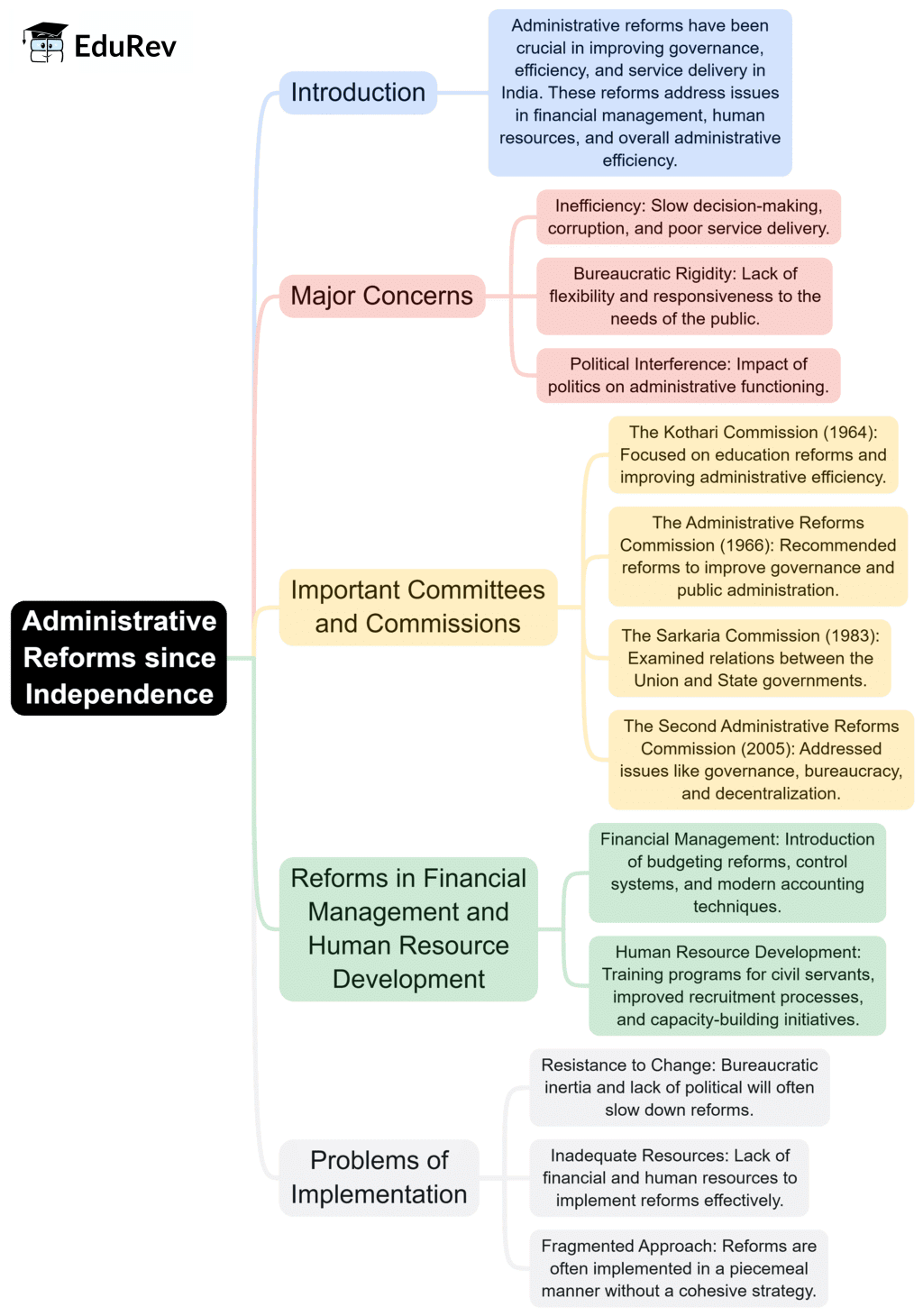UPSC Exam > UPSC Notes > Indian Polity for UPSC CSE > Mind Map: Administrative Reforms since Independence
Mind Map: Administrative Reforms since Independence | Indian Polity for UPSC CSE PDF Download

The document Mind Map: Administrative Reforms since Independence | Indian Polity for UPSC CSE is a part of the UPSC Course Indian Polity for UPSC CSE.
All you need of UPSC at this link: UPSC
|
142 videos|779 docs|202 tests
|
FAQs on Mind Map: Administrative Reforms since Independence - Indian Polity for UPSC CSE
| 1. What are the major administrative reforms implemented in India since independence? |  |
Ans. Since independence in 1947, India has undertaken several significant administrative reforms aimed at improving governance and public service delivery. Key reforms include the introduction of the Panchayati Raj system for decentralized governance, the implementation of the Right to Information Act in 2005 to promote transparency, the establishment of the National e-Governance Plan to enhance service delivery through technology, and various reforms in public sector management to improve efficiency and accountability.
| 2. How have the administrative reforms impacted the civil service in India? |  |
Ans. Administrative reforms have significantly transformed the civil service in India by promoting meritocracy, enhancing accountability, and improving service delivery. Initiatives like the introduction of the Performance Appraisal System and the restructuring of training programs have aimed to equip civil servants with modern skills. Additionally, reforms such as the establishment of the Indian Administrative Service Cadre have aimed to ensure that civil servants are more responsive to the needs of citizens.
| 3. What role does technology play in administrative reforms in India? |  |
Ans. Technology plays a crucial role in administrative reforms in India by enhancing efficiency, transparency, and accessibility. Initiatives such as the Digital India program aim to leverage technology for better governance, enabling online service delivery, e-governance platforms, and the use of data analytics for policy-making. This shift towards digital governance has made it easier for citizens to access services and for the government to track performance and accountability.
| 4. What challenges have been faced in implementing administrative reforms in India? |  |
Ans. Implementing administrative reforms in India has faced several challenges, including resistance to change within bureaucratic structures, lack of adequate training for officials, and political interference. Additionally, issues such as inadequate infrastructure, digital divide, and disparities in access to services have hindered the effective implementation of reforms. Overcoming these challenges requires sustained political will, capacity-building, and active citizen engagement.
| 5. How have administrative reforms influenced local governance in India? |  |
Ans. Administrative reforms have significantly influenced local governance in India, particularly through the establishment of the Panchayati Raj system, which empowers local self-governments in rural areas. This has led to increased participation of citizens in governance, accountability of elected representatives, and improved service delivery at the grassroots level. The devolution of powers and responsibilities to local bodies has enhanced local decision-making and responsiveness to community needs.
Related Searches
















